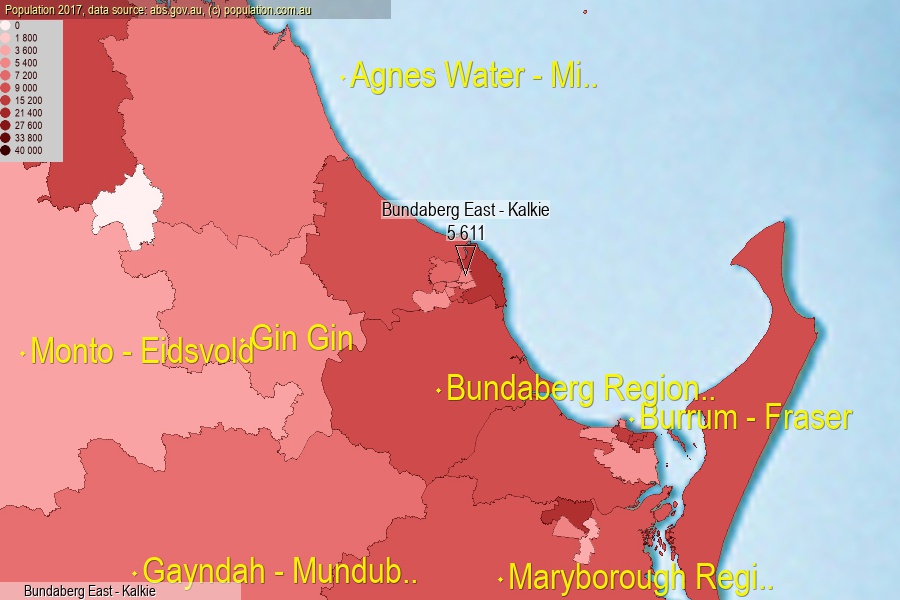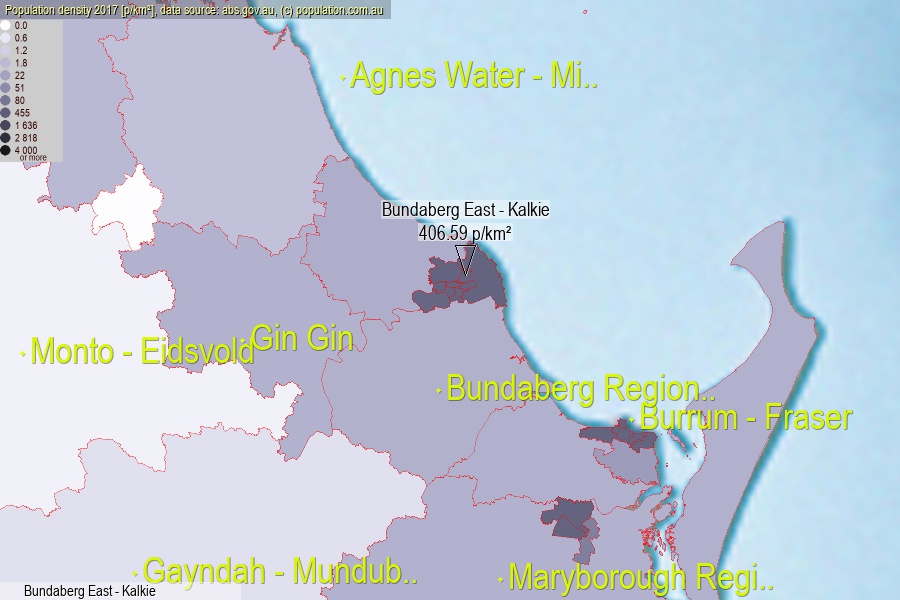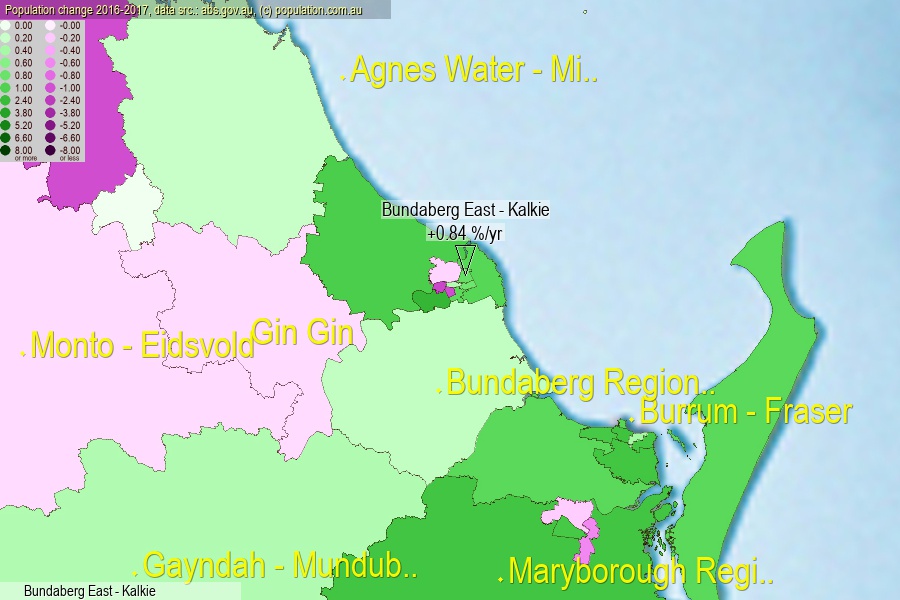 population.com.au
population.com.auLast official estimated population of Bundaberg East - Kalkie (as Statistical Area Level 2) was 5 611 people (on 2017-06-30)[2]. This was 0.02% of total Australian population and 0.112% of QLD population. Area of Bundaberg East - Kalkie is 13.80 km², in this year population density was 406.59 p/km² . If population growth rate would be same as in period 2016-2017 (+0.84%/yr), Bundaberg East - Kalkie population in 2025 would be 6 002. [0]



Click to enlarge. Bundaberg East - Kalkie is located in the center of the images.
Population [people], population density [p./km²] and population change [%/year] [2]
View borders » (new window) [4]
[1991-1992] +1.26 %/Yr.
[1992-1993] +1.67 %/Yr.
[1993-1994] +2.19 %/Yr.
[1994-1995] +2.64 %/Yr.
[1995-1996] +2.79 %/Yr.
[1996-1997] +2.92 %/Yr.
[1997-1998] +1.36 %/Yr.
[1998-1999] +1.14 %/Yr.
[1999-2000] +0.90 %/Yr.
[2000-2001] +1.36 %/Yr.
[2001-2002] +1.34 %/Yr.
[2002-2003] +1.52 %/Yr.
[2003-2004] +0.47 %/Yr.
[2004-2005] +2.62 %/Yr.
[2005-2006] +6.65 %/Yr.
[2006-2007] +3.15 %/Yr.
[2007-2008] +5.10 %/Yr.
[2008-2009] +3.32 %/Yr.
[2009-2010] +1.77 %/Yr.
[2010-2011] +1.08 %/Yr.
[2011-2012] +1.72 %/Yr.
[2012-2013] +0.72 %/Yr.
[2013-2014] +0.79 %/Yr.
[2014-2015] +0.18 %/Yr.
[2015-2016] +0.72 %/Yr.
[2016-2017] +0.84 %/Yr.
[0] Calculated with linear interpolation from officially estimated population
[1] Read more about SA2 and Australian Statistical Geography Standard (ASGS) on abs.gov.au
[2] Population data from Australian Bureau of Statistics (Population and density: 2017; change: 2016-2017)
[3] Digital Boundaries: Australian Statistical Geography Standard (ASGS) 2016.
[4] Border coordinates are simplifyed using Ramer-Douglas-Peucker algorithm.